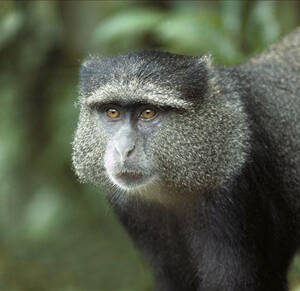
The scientific name of the blue monkey is Cercopithecus mitis, and its foreign names are Blue Monkey and Diademed Monkey. It moves in groups and feeds on wild fruits, leaves, bamboo shoots, crabs, frogs and other animals and plants.Listed in the IUCN Red List of Primates, ver.: 2008 - Low Concern (L...
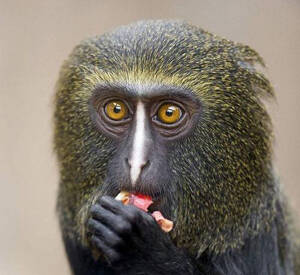
Owl-faced long-tailed monkey (scientific name: Cercopithecus hamlyni) is also known as Hamlyn’s Monkey in English. It has 2 subspecies.Owl-faced long-tailed monkeys live in trees and appear on cliffs in the forests on both sides of the river valley. They often move in groups and forage at dawn and...
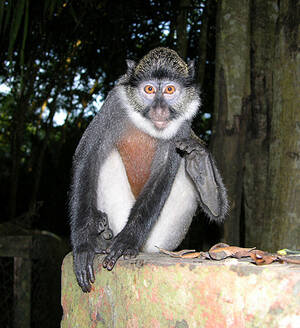
The scientific name of the red-throated monkey is Cercopithecus erythrogaster, and its foreign name is White-throated Monkey. It lives in the top of the forest canopy and is a social animal. It consists of family groups of 5-50 monkeys, and there are also small groups of single male monkeys. These m...
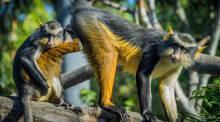
Diana's long-tailed monkey (scientific name: Cercopithecus diana) is also known as Diana Monkey in English. It is a tree-dwelling long-tailed monkey with two subspecies.Diana's long-tailed monkey is a diurnal animal. They live in trees during the day and rarely come to the ground. They will...
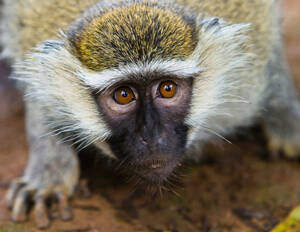
Tantalus green monkey (scientific name: Chlorocebus tantalus) English Tantalus Monkey, French Vervet tantale, Spanish Vervet de Tántalo, German Tantalus-Grünmeerkatze, Tantalus-Meerkatze, is a medium-sized monkey.The size of the Tantalus green monkey home range varies depending on the number of cl...
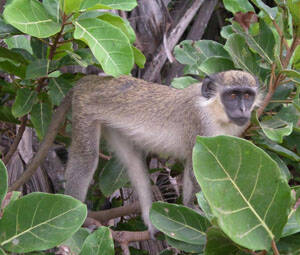
Green Monkey (scientific name: Chlorocebus aethiops) is also known as Green Monkey and Western Green Monkey in foreign languages. It has no subspecies.Green monkeys often move on the ground. They are gregarious. They are good at climbing, running, and swimming. There are large differences in the siz...

Green monkey (scientific name: Chlorocebus pygerythrus) is called Vervet in foreign language, and has 5 subspecies.Green monkey often moves on the ground. It is gregarious. It is good at climbing, running, and swimming. Populations vary widely, with groups ranging in size from 7 to 80 individuals. F...
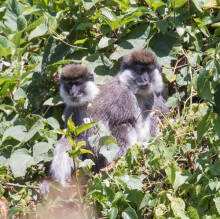
Bale Mountain Green Monkey (scientific name: Chlorocebus djamdjamensis) is also known as Bale Monkey in English. It is a medium-sized monkey.Bale Mountain Green Monkey often moves on the ground. Sociable. They are good at climbing, running, and swimming. There are large differences in the population...

Malbrouck Monkey (scientific name: Chlorocebus cynosuros) is a medium-sized monkey.Malbrouck Monkey often moves on the ground. It is gregarious. It is good at climbing, running, and swimming. Populations vary widely, with groups ranging in size from 7 to 80 individuals. Female Marlbrook green monkey...
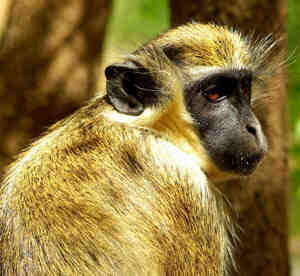
Black-faced green monkey (scientific name: Chlorocebus sabaeus) is also known as Grivet Monkey in English. There are 3 subspecies.Black-faced green monkeys often move on the ground. They are gregarious. They are good at climbing, running, and swimming. The populations vary widely, with groups rangin...
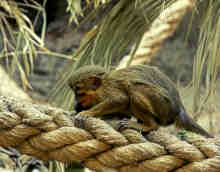
Southern Talapoin Monkey (Scientific name: Miopithecus talapoin) Foreign name Southern Talapoin Monkey, is one of the two small monkeys in the genus Miopithecus, with sexual dimorphism.Pygmy monkeys live in large groups, usually 60-100, but often gather in groups of more than 100 near villages to st...
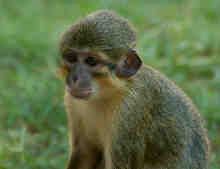
Gabonese pygmy monkey (scientific name: Miopithecus ogouensis), also known as Northern Talapoin Monkey, was once a subspecies of pygmy monkey and was designated as an independent species in 1997.Gabonese pygmy monkeys live in large groups, usually 60-100, but often gather in groups of more than 100...
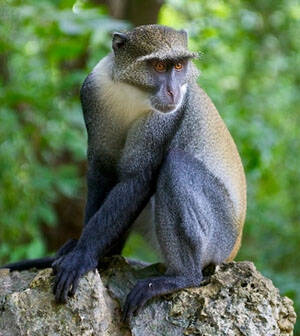
Allenopithecus nigroviridis (scientific name: Allen's Swamp Monkey) is the only species of the genus Allenopithecus in the family Primates.Allenopithecus nigroviridis is a diurnal animal that forages on the ground. It lives in groups, with up to 40 monkeys in a group, and is usually divided into...

The scientific name of the ring-tailed monkey is Callimico goeldii, which is a rare small monkey.Ring-tailed monkeys live in groups in the middle layers of trees, with 20 to 30 in each group. They are agile during the day and are difficult to catch. They mainly eat fruits, leaves, insects, bird eggs...
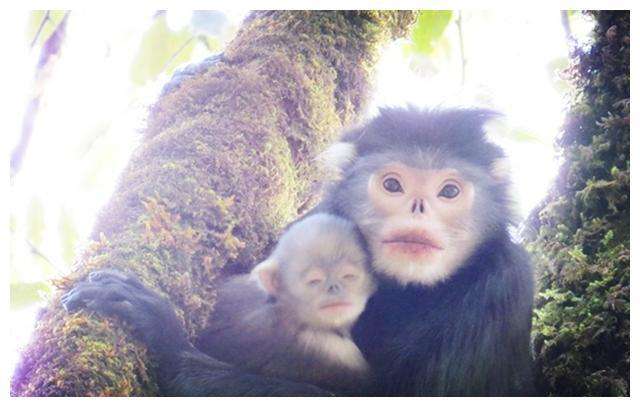
Nujiang golden monkey is also known as Myanmar Snub-nosed Monkey and Burmese Snub-nosed Monkey in foreign languages. It has no subspecies and is the fifth golden monkey species discovered in the world in modern times.In early 2010, Fauna & Flora International collected a complete golden monkey c...

In Chinese history, the Guizhou golden monkey was called "Zongyi Beast" and "Guoran Beast". The Guizhou golden monkey has no subspecies differentiation, but some scholars merge it with the Sichuan golden monkey as two subspecies of the same species.Unlike the Sichuan golden monke...
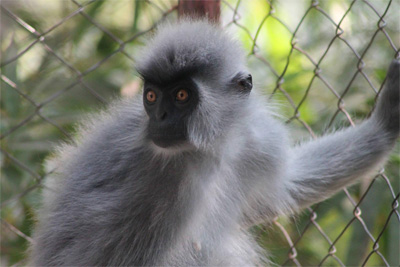
Shortridge's Langur is a primate found in northeastern Kachin State, Myanmar, and northwestern Yunnan Province, China. It was once thought to be a subspecies of the pileated langur (Trachypithecus pileatus).Xiao's black-winged monkeys are diurnal and live in groups of 2 to 15 individuals. Wh...
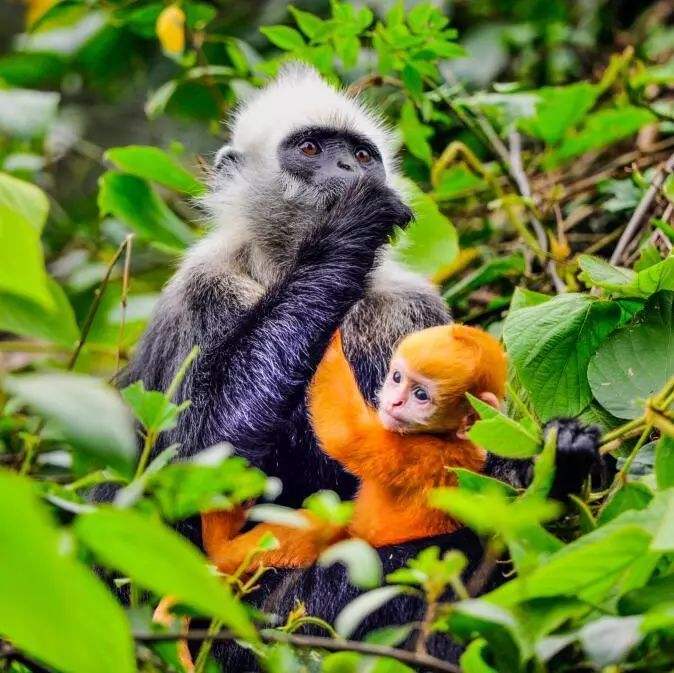
The white-headed langur is named for its food of leaves and is a rare monkey in my country.The white-headed langur is alert, very lively, active, and very good at jumping. The slender body, slender limbs, and well-developed hip calluses are just adapted to the life of living in trees and rocks. They...
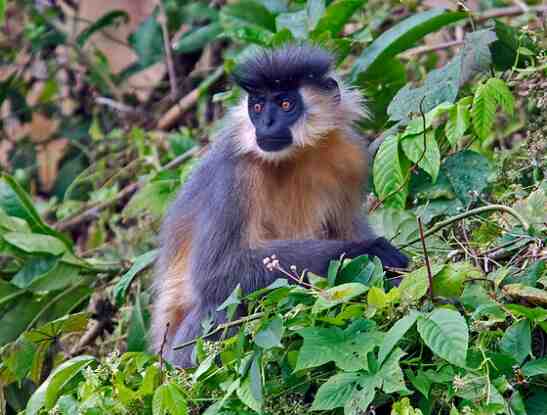
There are 4 subspecies of the hooded langur, with different fur colors. The Bengal subspecies has orange abdomen, beard and throat; the Bhutan subspecies has a gray collar, a light red abdomen, a black face and a dark gray crown; the Brahman subspecies has a much lighter fur color than other subspec...